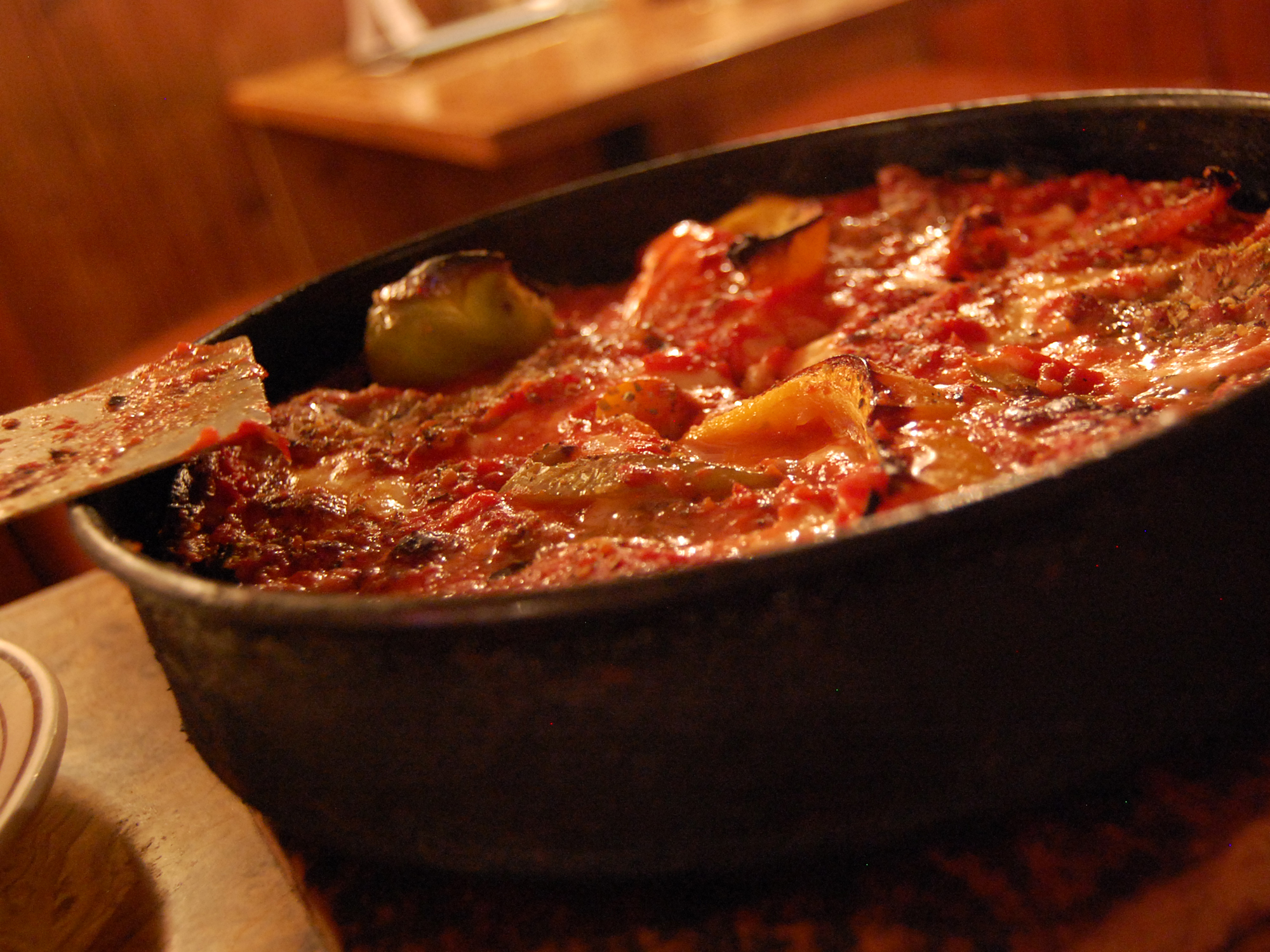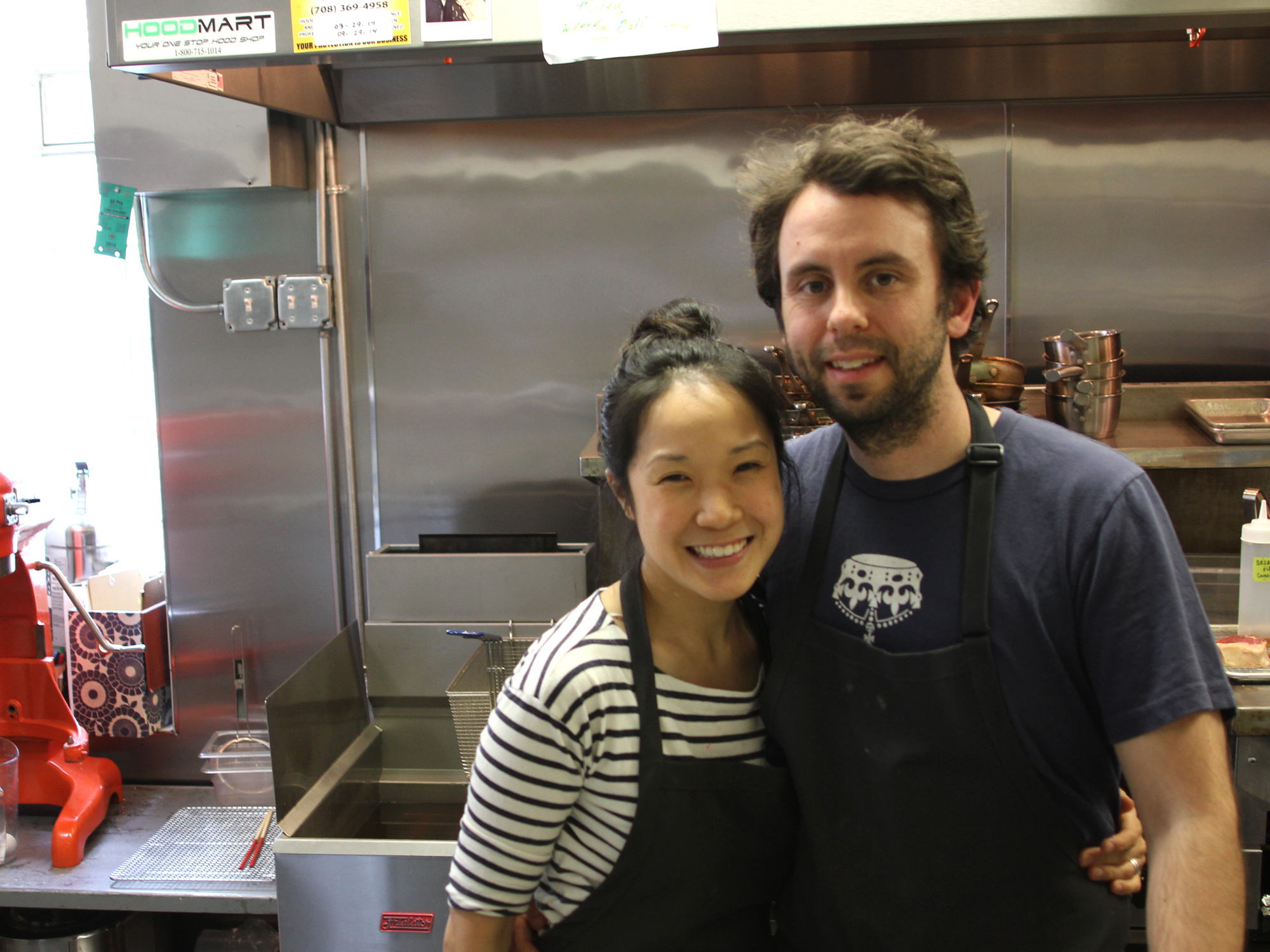THERE WAS USUALLY ONE STEAK ON THE MENU at The Bristol, the first restaurant opened by chef Chris Pandel with John Ross and Philip Walters, back in 2008. It was a hanger steak, a cut called that because it hangs from the diaphragm. It was on the menu not because it was little-known, a little less expensive, highly flavorful or a bit funny-looking next to a platter of rib eyes. It was on the menu because it was all of those things—it made a statement about whole animal or nose-to-tail cooking at the Wicker Park restaurant, that the tastiest things weren’t necessarily the most conventionally attractive or salable ones. That the path to deliciousness ran through things like pork belly, beef tongue and even, in the case of one salad I had a few years back, duck testicles. (Which, I have to say, are alarmingly large compared to ducks.)
This devotion to obscure delights is not what one thinks about food at a big steakhouse. And with three hundred seats scattered over half a dozen or more rooms on multiple levels, Swift & Sons is a very big steakhouse which has to pump out the things that steakhouse customers expect—steaks by the carload, swimming pools of Caesar salad, tanker ships of red wine. The West Loop collaboration between B. Hospitality—the Bristol team, who also have Balena and Formento’s by now—and the Boka Group (Girl & the Goat, GT Fish & Oyster, Momotaro) is there to fulfill all your steakhouse cliché dreams, at a high level of business dining service and lush decor. Which basically means steak comes in three cuts—filets, strips and ribeyes. The rest of the animal can go be hamburger somewhere else.
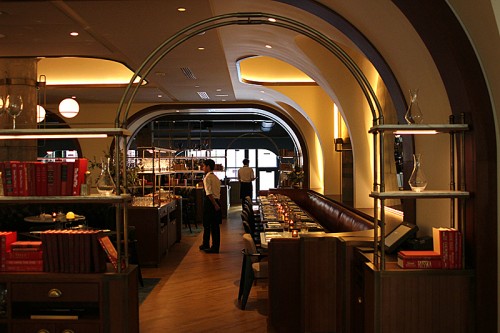
Swift & Sons
Pandel understands the limitations of the form—”Most of them know what they want before they walk in the door,” he says of the steakhouse crowd—but he’s trying not to abandon the principles that animated The Bristol. He and the partners behind Swift & Sons are trying to figure out how to compete as a macho Chicago steak joint while sourcing in what they see as ethical and sustainable ways. A little of that is trying to change steak diners’ habits, but mostly it’s about changing things behind the scenes, that diners don’t see and probably wouldn’t care about if they did. Will it work? Can an expensive Chicago meat palace, the epitome of conspicuous consumption, be sustainable?
How Swift & Sons does in the next year or so will probably go a long ways to answering that question for many restaurateurs in America—positively or negatively. Pandel and I spoke recently before service in a booth at Swift & Sons.
MICHAEL GEBERT: I was always a fan of the hanger steak at The Bristol, because if somebody wanted to go have steak, I could say, we’ll go to The Bristol and you can eat the hanger steak and I’ll eat whatever I feel like. And now here you are—
CHRIS PANDEL: Serving every other cut on the animal but that one.
Because people in the big fancy steakhouse have no interest in an oddball cut?
I don’t know if they have any interest. We’re trying to figure out if they want the oddball cut. It’s not on the menu yet. We would like to serve hangers, all the butcher’s cuts. But if you don’t know—a lot of it is just exposure. Everyone understands the filet. It is and it’s going to be our top seller here, no matter what. I can’t control that. But to introduce them to a chuck flap, a baseball steak, all these things that we can have an intelligent conversation about—they just don’t exist in people’s worlds.
So you were a chef known for cooking odd cuts, for cooking with offal—how do you go from that to a steakhouse?
The first thing was terror. Like no shit, I was scared. And then it was the challenge, how can you do just that, be ethical, be smart, source well, and still pay attention to all the things that were important when you were running a 60-seat restaurant. And it’s basically, how do we translate that? And we found good partners in our suppliers, we did a lot of research over 2-1/2 years to kind of home in on who-what-when-where-why. We still buy all of our vegetables from the same farmers that we did before, now we can just give them much larger checks [laughs]. Which they love.
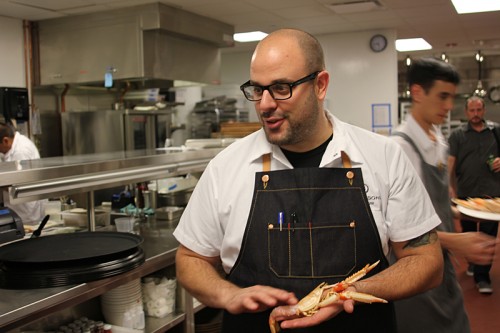
Chris Pandel and friend before service.
And beyond that, the meat still comes from small farms, but it’s translating more to co-ops than a single ranch. So it’s exposing us to a wider range of people—
But it’s too big to put farmer names on the menu, like you did at The Bristol?
To go translate the entire state of Nebraska to a menu is impossible. But we’ve worked with these folks for two years to try to construct a menu in an intelligent, delicious, ethical and marketable way. And it’s by finding these small co-ops that have ten to fifteen families, all raising beef the same way, and they’re shipping to Chicago through my meat purveyor, because that way I can trust it. It’s all stuff that’s above the dairy line, so there’s no dairy cattle getting in there. They’re all hormone and antibiotic free unless they do get sick, and then they’re removed from the lot and put into a separate lot. It’s all basic standards and practices, really.
Wow, “dairy line.” I never heard of that but I can guess what it is, because I know how cold it is in Nebraska—
There is a giant dairy line and we source above it, that’s one of our rules.
Well, tell me about the process of how you found purveyors who would work with you the way you wanted to work.
We sat and spoke with every medium to large purveyor in the Chicagoland area that could really keep up with a restaurant this size. After conversations, we tasted the beef, and then we blind-tasted everything. There was no brand attached to anything. We sat there and we literally ate hundreds of pounds of meat over a month’s span. We should all have gout for it, seriously, it was gross.
We’re trying to stay along the same path that we started on, eight years ago—just on a much larger scale.
And we narrowed it down to, flavor first, and then from there, within this package that we’re looking for, can you supply, can you sustain, can you maintain the standard, the quantity, the this, the that, and can we trace your stuff back to where you’re saying it’s coming from.
And we found a couple of guys that could. We found some stuff in Indiana that’s really really good. We found some prime steaks from, basically, what would be considered a small ranch, that can be supplied through a major Chicago purveyor. The rest of the stuff is coming from Nebraska, Kansas, Missouri, and then we’re going to start this small, tiny little program, hopefully within about six months, called boutique beef where we use guys like Rob Levitt [at Local Foods] and we’ll say, we want Carlisle’s beef from Northern Wisconsin, we’re going to pull in a half animal, Rob, can you break it to our specs. And then we’ll do a small menu, a five course menu, only serving that animal. So you can pay attention to the breed, the terroir, what they were fed, and really kind of scope out the nuances of what that beef really tastes like. We’re trying to stay along the same path that we started on, eight years ago—just on a much larger scale.
Speaking of Carlisle beef, your tasting menu reminds me of a dish at Ardent in Milwaukee, where Justin Carlisle used the milk from a cow, and the cheese from the same cow, and the beef from his dad’s farm which you just mentioned—
His father was the inspiration for this [boutique beef] menu. Justin and I—right when he opened Ardent, he brought up Jason Vincent and myself to Milwaukee, and we were talking about his dad’s beef. I knew his dad was a cattle rancher, but we never heard anything about the meat until he started serving it there, and aging it himself. I said, this is delicious, can we get it in Chicago, and he started coming down and selling some to Rob [Levitt] and so on.
Then I said, okay, what if we do this petite thing where we find guys like your dad who are growing, not hundreds of heads of cattle, but stuff that’s manageable for a family to maintain. Can we take a half a side, and do that four times a year, six times a year? And he said yeah, absolutely. And that’s where that whole thing bloomed from.
Gallery: Swift & Sons
Will steak eaters care about sourcing, though? I feel like the foodie audience and the steakhouse audience are like a Venn diagram that just slightly overlaps.
Maybe a 3% margin… Yeah, I’m not so much concerned about them caring about it, so long as they enjoy their dinner. Am I supposed to sit here and try and push my agenda on them? That’s not my job. My kitchen crew all understand why we do it, because it’s been part of our training. But we’re not going to shove it down anyone’s throat. It’s come in and have a great meal, enjoy yourself. If you want to know, I’ll tell you, but the fact that the celery root came from Nichols Farm and I brought it here in my car, does anyone care? Probably not. Was the celery root agnolotti delicious? Then great. Success!
There’s a couple of things on the menu that are maybe a little left of center, some homemade pastas, some of the salads are a little bit different, like the butcher’s salad with beef tendon and sauce ravigote, which you wouldn’t see on your average steakhouse menu. But that said, a lot of it is very traditional. The issue is, sourcing properly, and then, can I make the best version of this around.
One thing I was thinking about this—when you started The Bristol, that was when nose-to-tail cooking was pretty avant-garde. And the last two things you’ve opened now, Formento’s and this—they’re kind of retro, like there’s Beef Wellington on the menu. Did you mean to become a chef of kind of classic, midcentury-American food?
I told Kevin Boehm that, if you had told me eight years ago that I’d be putting a crab cake on a menu, I probably would have punched you. But now it’s a different challenge. My mentality has changed, my family life has changed, everything has totally changed for me personally. So it’s like, if I’m asked to make something like a crab cake, it’s a challenge to see if I can make a crab cake way better than any one I’ve ever had in my entire life. And that’s a great challenge, too—what can I do to make sure our onion soup, our Caesar salad, all these standardized dishes that everyone’s had a million times, are pushed to 11.
The Beef Wellington is the only dish that reaches really far back. I call them cruise ship dishes—salmon in aspic, that kind of goofy stuff that can be really good if it’s well executed. Once we get our feet, the staff is trained better and they know how the menu works and our timing is better, six to nine months I hope, we’ll do things like leg of lamb roasted in bread dough. Because yeah, this restaurant is a classic steakhouse, but it should be a great restaurant that just happens to serve a lot of red meat. So going back to some of those old classics is a goal for the future, for sure. It’s tableside service, it’s bring back some of those service items where you have to engage the customer with more than just a sales pitch. We’re working on our flambé license right now [laughs].
I think too, when The Bristol opened in 2008, it was on a mission for a certain way of cooking. And now I expect for you, if you go out to eat, you look at a menu and see funky parts and think “Hey, it looks like The Bristol.” Like Paul Virant seeing things preserved in jars everywhere when he goes out.
There’s some of that. When we opened The Bristol, I left my previous job to prove that I could still cook. I had helped Rick Tramonto open a bunch of restaurants, and I was a paper pusher. I was engaged in business and this and that, and I didn’t cook as much as I wanted to. We opened The Bristol and I was like, we’re going to change the menu every day, we’re really going to push and push—I was nuts. I’ve matured a lot since then. I’ve lost all my hair [laughs]. A lot of things have happened to where I’m comfortable with writing this menu and taking the challenge in a completely different way than the challenge at The Bristol, to be sure that everything was made from scratch, everything is sourced completely contiguously [to Illinois], we’ll take the five kinds of salsify dropped off by the farmer and make a dish out of it two hours later.
That’s a different ballgame. This is a large restaurant, with expectations, and it’s in a genre that’s already been captured. We’re not reinventing the wheel—can’t we just make the best wheel there is? That’s the goal. That’s what we’re going to try to do.
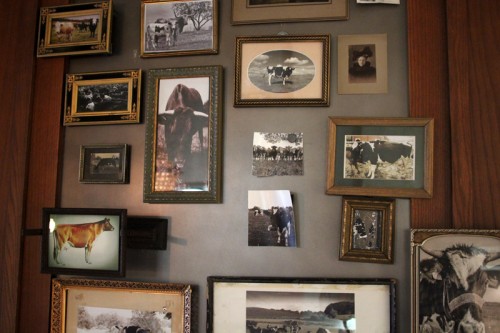
Michael Gebert is the ropin’, ridin’ editor of Fooditor.
Latest
Join the Discussion
After you comment, click Post. If you're not already logged in you will be asked to log in or register with Disqus.












